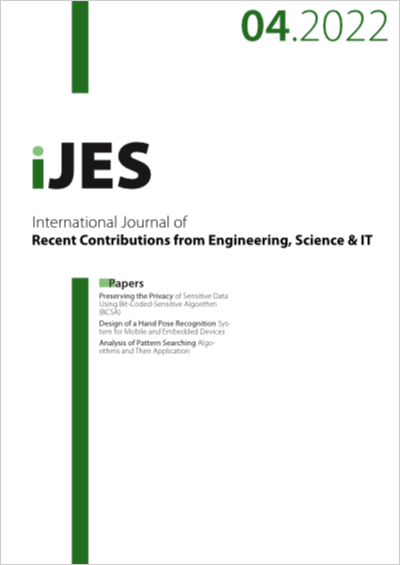Preserving the Privacy of Sensitive Data Using Bit-Coded-Sensitive Algorithm (BCSA)
DOI:
https://doi.org/10.3991/ijes.v10i04.35023Keywords:
Bit-code, Data Anonymity, microdata, Information DisclosureAbstract
Organizations now deal with massive amounts of data. Data is collected from various points such as hospitals, credit card companies, and search engines. After collecting this voluminous data, it is published and shared for research. Data that is collected may have sensitive information that might be used to identify an individual and consequently lead to privacy violations when published. To address this challenge, privacy-preserving data publishing (PPDP) seeks to remove threats to privacy while ensuring that the necessary information is released for data mining. Various techniques have been proposed to solve the problems associated with sensitive information. One such technique is k- anonymity. This technique is the best and very efficient. However, it also leads to loss of information, reduces data utility, and works well only with static tables. In this paper, we proposed a technique that addresses the challenges of K-anonymity known as the Bit-Coded-Sensitive Algorithm (BCSA). This algorithm is more efficient and effective and ensures that the privacy of the individual is preserved by avoiding disclosure, and linkages and at the same time ensuring high quality and utility of data. BCSA first identifies the source of data and based on that, uses bits to code sensitive data with a key.
Downloads
Published
How to Cite
Issue
Section
License
Copyright (c) 2022 Dr Patricia Ghann, Dr Emmanuel Dortey Tetteh, Kobby Asare Obeng, Muhyideen Elias

This work is licensed under a Creative Commons Attribution 4.0 International License.
The submitting author warrants that the submission is original and that she/he is the author of the submission together with the named co-authors; to the extend the submission incorporates text passages, figures, data or other material from the work of others, the submitting author has obtained any necessary permission.
Articles in this journal are published under the Creative Commons Attribution Licence (CC-BY What does this mean?). This is to get more legal certainty about what readers can do with published articles, and thus a wider dissemination and archiving, which in turn makes publishing with this journal more valuable for you, the authors.
By submitting an article the author grants to this journal the non-exclusive right to publish it. The author retains the copyright and the publishing rights for his article without any restrictions.
This journal has been awarded the SPARC Europe Seal for Open Access Journals (What's this?)


